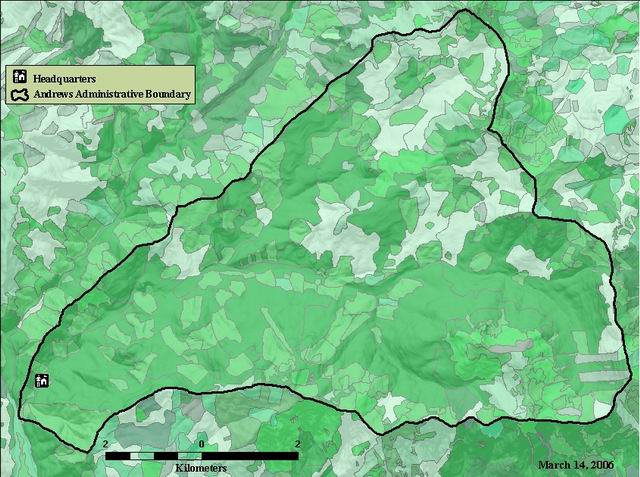Willamette National Forest vegetation classification (2002) clipped to the Andrews Experimental Forest
Shapefile

Tags
Willamette National
Forests, vegetation, managed forests, Oregon, HJ Andrews Experimental Forest, natural
forests
Summary
To provide information on vegetation distribution of the HJ Andrews
Description
Vegetation map of the HJ Andrews, created by the Willamette National Forest l created from SPOT imagery and aerial photos
Credits
There are no credits for this item.
Use
limitations
See data access policy at www.fsl.orst.edu/lter/data.fr.htm (especialy the data use policy)
Extent
West -122.268450 East -122.095390 North 44.286702 South 44.192727
Scale Range
Maximum (zoomed in) 1:5,000 Minimum (zoomed out) 1:150,000,000